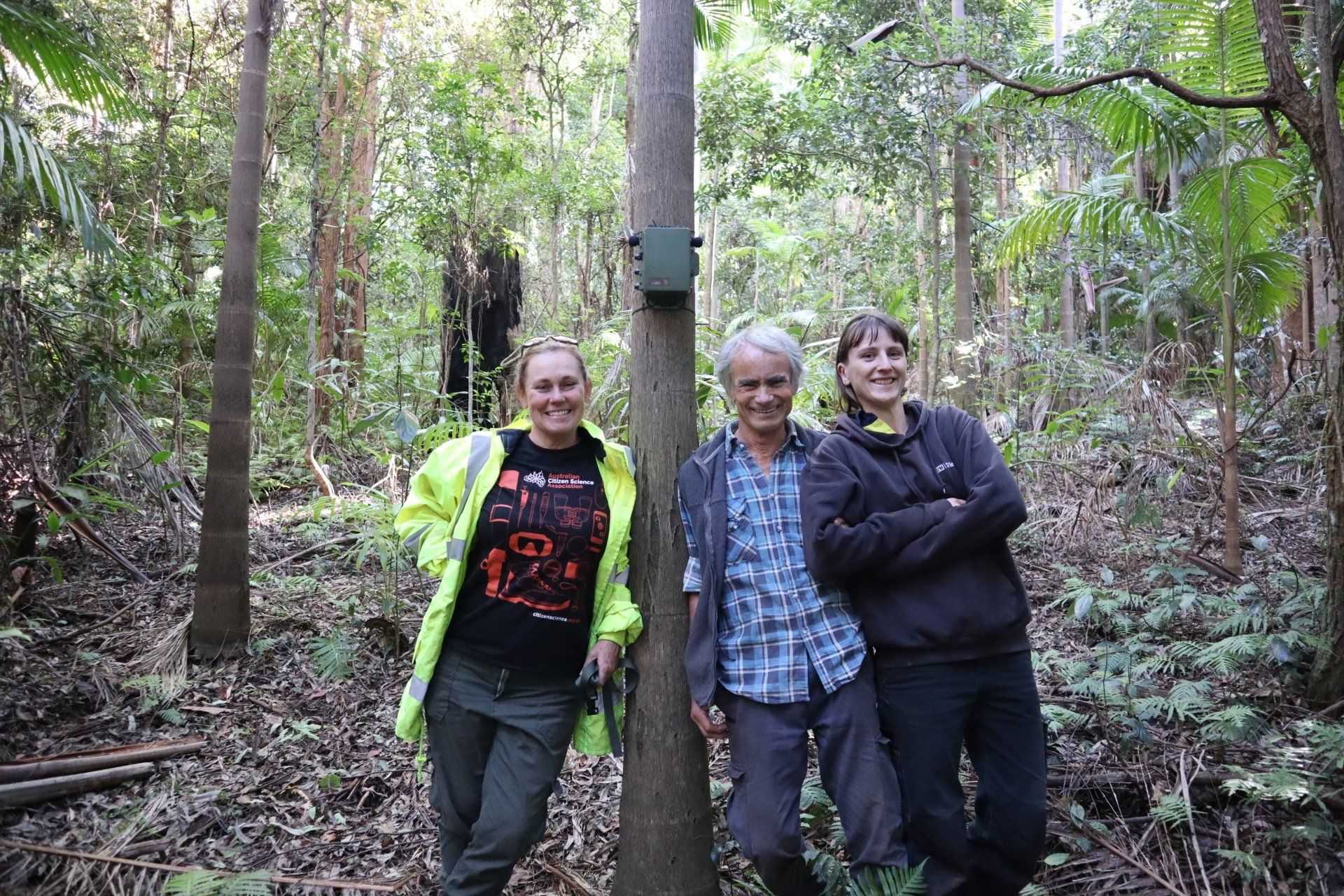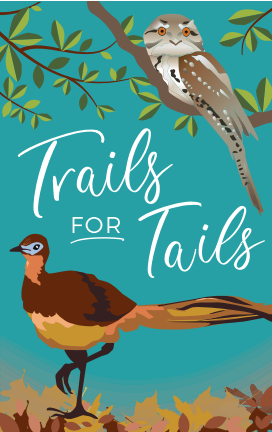The Project
In 2018, the Border Ranges Alliance, under the auspices of the Northern Rivers Fire and Biodiversity Consortium Inc (NRFABCON), commenced the Trails for Tails: Restoring Pathways for Albert’s Lyrebird and Marbled Frogmouth project. Funded by the NSW Environmental Trust’s Saving our Species program and the Foundation for National Parks and Wildlife the 3 year project is planned to conclude in June 2022. Targeting 10 individual landholdings, the project monitored both species using song meters, wildlife cameras and manual bird surveys. Each property has confirmed populations of either Albert’s Lyrebird or Marbled Frogmouth or both. In addition to these findings, the wildlife cameras also captured an alarming number of feral animals – fox, cat and wild dog.

This project, Trails for Tails 2.0, was funded by the Australian Governments Bushfire Recovery for Wildlife and Habitat Community Grants and will solely target feral animal management to save Albert’s Lyrebird in fire affected areas. Through engaging 8 participants from the previous Trails for Tails project, we seek to deliver a targeted feral animal control program that addresses property-specific feral animal threats.
Project Background
Of the 5.3 million hectares burnt across NSW, 37% occurred in National Park estate (on-park) and the remaining 63% occupied private lands (off-park). Off-park areas containing Albert’s Lyrebird populations are of extreme concern as they lack the protection that on-park areas have secured. These properties are the focus of an existing Border Ranges Alliance’s Trails for Tails (T4T) project engaging ten landholders within the Byron, Lismore and Kyogle shires.
Unfortunately, majority of these properties were impacted by the 2019-20 bushfires. Five properties that were near, adjoining or directly affected by the Mt Nardi fire are of particular concern whilst every other property is now at a much greater risk of wildfire after prolonged drought conditions and isolation.
Coming to an end in August 2021, the T4T data confirmed Lyrebird presence at each property however a large number of feral cats, foxes and dogs were recorded using the same equipment. Footage from one property recorded a wild dog carrying their prey, a Red-Legged Pademelon (Thylogale stigmatica) (threatened species) and another Red-fox holding a small animal that couldn’t be identified. Landholders have expressed their concern of pest animals impacting native wildlife and given the alarming number of cats in particular it's expected that Lyrebird populations are being predated on and hence why the Trails for Tails 2.0 project started.
T4T 2.0 will expand the T4T project efforts through monitoring and to reduce the threat that pest animals have on the on-going survival of Albert's Lyrebird. The eight landholders participating are already engaged in the first T4T project and therefore have known feral animal populations and Albert's Lyrebird inhabiting their properties. Each site will undergo an abatement program specific to their property, seasonal surveys to confirm feral animal presence and monitor the success of the abatement program and observe Albert’s Lyrebird presence.
